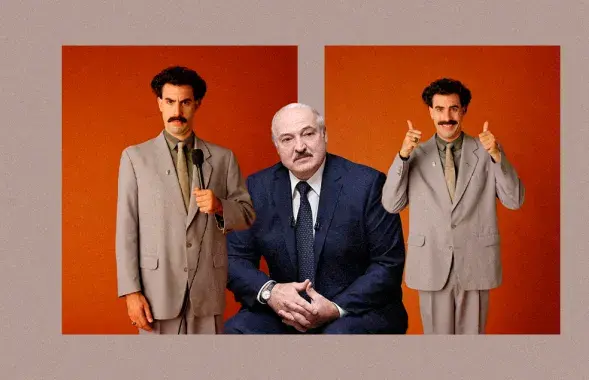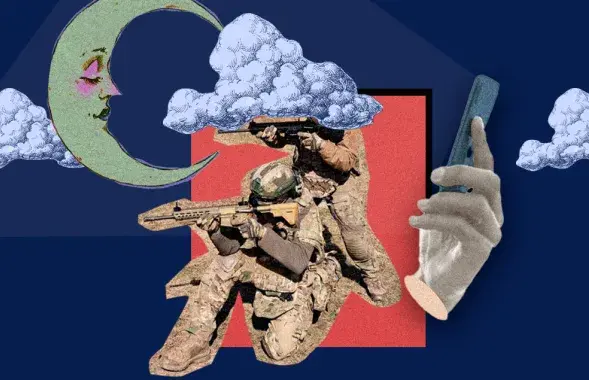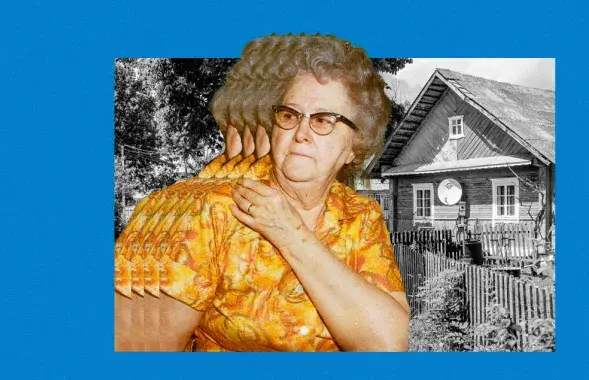Belarusians celebrate Kalyadas
The whole world is waiting for the main holidays of the year. The feeling of anticipation is in the air. Some people are waiting for the New Year, others think that Christ’s Birthday is the major holiday. The celebration of the Orthodox and Catholic Christmas is quite alike. The main difference is in the date. The Catholic Christmas is on December 25. Orthodox Christians celebrate it a bit later – on January 7.
Christmas is preceded by Christmas Eve in both religions. You are not allowed to eat or drink anything from morning till night on that day. You can eat boiled rice with raisins and honey after a solemn evening service. An orthodox priest father Alyaksadr explains how to cook it:
“There are different ways to cook the dish in different regions. It can be boiled wheat or something like that. People sometimes cook some cereal with honey, poppy-seeds and raisins. The food is lenten but at the same time sweet and very tasty. The lent ends after a mass on Christmas Day. A festive table may be laid after it. You can cook anything you like then”.
The Catholic Christmas Eve is on December 24. Believers also eat boiled rice with raisins and honey and, according to a Greco-Catholic priest Andrei, they even put some hay under the table-cloth:
“On the whole, there should be 12 lenten dishes on the table on that day. You should always put some hay under the table-cloth which will remind about the fact that Jesus Christ was born in a cattle-shed. People visit each other to celebrate Christmas together after the evening service”.
By the way, Christmas Day is preceded with the Philip Lent. It is not very strict and you can even eat fish during it on all days but Wednesday and Friday.
Muslims also celebrate their main holiday around this day. It is called Kurban-bairam. Muslims use a local calendar and the holiday may be celebrated on different days. Kurban-bairam was on December 20 this year. Ali Varanovich, imam of Homel Muslim community, explains the origin of the holiday:
“The holiday is dedicated to the story of Prophet Abraham, or Ibrahim, as Muslims call him. God ordered him to sacrifice his son. However, when he was about to cut his son’s throat, God stopped him and said that Ibrahim had obeyed his order and gave him a lamb to sacrifice instead of his son.
Muslims perform hajj for this holiday – a festive pilgrimage to Mecca. They also sacrifice a lamb like Ibrahim did. It can also be a bull or even a camel”.
Jews do not celebrate anything during the universal holidays. However, they celebrated Hanukah from December 5 till December 12 this year. They celebrated the liberation of Jews from foreign invaders – Greeks, who tried to impose their culture and habits on Jews in the II century B.C. Jews rebelled and won having removed statues of foreign gods from their temple. They had to light a special candelabrum - Menorah. There was only enough consecrated olive oil for one day. But a miracle happened and the oil burned for eight days.
An activist of the Jews’ national movement Volf Rubinchyk explains how to celebrate Hanukah:
“The Hanukiah is lit – it is a special candelabrum for eight candles or oil. You add one candle every day. It is placed on the window to show people that it is a holiday and to remind them about the miraculous victory. Taking into account the role of oil in this holiday, people cook food using it – doughnuts, thick pancakes and potato fritters. It is a merry holiday, although it is not the main one in the Hebrew calendar”.
By the way, Jews celebrate the New Year, Rosh Hashanah, in September. There should always be fish served because they say that you have to eat a piece of a fish head to become a head. It is always recommended to eat pomegranates to have a lot of descendents – just like those seeds. The Most High denotes the fate of every Jew for the next year during this period. So you have to behave and ask people to forgive you for the sins committed during the year.
Our ancestors also had their winter holidays. Belarusians greeted Kalyada, Mother of Sun, on December 24. There was a festive dinner and the main dish was boiled rice with raisins and honey. Kalyadas started on the following day. Young people grouped and went to houses singing songs. There was always “a goat” – a guy dressed in a sheepskin turned inside out. Hosts greeted their visitors and tried to treat them on something tasty.
Christmas is preceded by Christmas Eve in both religions. You are not allowed to eat or drink anything from morning till night on that day. You can eat boiled rice with raisins and honey after a solemn evening service. An orthodox priest father Alyaksadr explains how to cook it:
“There are different ways to cook the dish in different regions. It can be boiled wheat or something like that. People sometimes cook some cereal with honey, poppy-seeds and raisins. The food is lenten but at the same time sweet and very tasty. The lent ends after a mass on Christmas Day. A festive table may be laid after it. You can cook anything you like then”.
The Catholic Christmas Eve is on December 24. Believers also eat boiled rice with raisins and honey and, according to a Greco-Catholic priest Andrei, they even put some hay under the table-cloth:
“On the whole, there should be 12 lenten dishes on the table on that day. You should always put some hay under the table-cloth which will remind about the fact that Jesus Christ was born in a cattle-shed. People visit each other to celebrate Christmas together after the evening service”.
By the way, Christmas Day is preceded with the Philip Lent. It is not very strict and you can even eat fish during it on all days but Wednesday and Friday.
Muslims also celebrate their main holiday around this day. It is called Kurban-bairam. Muslims use a local calendar and the holiday may be celebrated on different days. Kurban-bairam was on December 20 this year. Ali Varanovich, imam of Homel Muslim community, explains the origin of the holiday:
“The holiday is dedicated to the story of Prophet Abraham, or Ibrahim, as Muslims call him. God ordered him to sacrifice his son. However, when he was about to cut his son’s throat, God stopped him and said that Ibrahim had obeyed his order and gave him a lamb to sacrifice instead of his son.
Muslims perform hajj for this holiday – a festive pilgrimage to Mecca. They also sacrifice a lamb like Ibrahim did. It can also be a bull or even a camel”.
Jews do not celebrate anything during the universal holidays. However, they celebrated Hanukah from December 5 till December 12 this year. They celebrated the liberation of Jews from foreign invaders – Greeks, who tried to impose their culture and habits on Jews in the II century B.C. Jews rebelled and won having removed statues of foreign gods from their temple. They had to light a special candelabrum - Menorah. There was only enough consecrated olive oil for one day. But a miracle happened and the oil burned for eight days.
An activist of the Jews’ national movement Volf Rubinchyk explains how to celebrate Hanukah:
“The Hanukiah is lit – it is a special candelabrum for eight candles or oil. You add one candle every day. It is placed on the window to show people that it is a holiday and to remind them about the miraculous victory. Taking into account the role of oil in this holiday, people cook food using it – doughnuts, thick pancakes and potato fritters. It is a merry holiday, although it is not the main one in the Hebrew calendar”.
By the way, Jews celebrate the New Year, Rosh Hashanah, in September. There should always be fish served because they say that you have to eat a piece of a fish head to become a head. It is always recommended to eat pomegranates to have a lot of descendents – just like those seeds. The Most High denotes the fate of every Jew for the next year during this period. So you have to behave and ask people to forgive you for the sins committed during the year.
Our ancestors also had their winter holidays. Belarusians greeted Kalyada, Mother of Sun, on December 24. There was a festive dinner and the main dish was boiled rice with raisins and honey. Kalyadas started on the following day. Young people grouped and went to houses singing songs. There was always “a goat” – a guy dressed in a sheepskin turned inside out. Hosts greeted their visitors and tried to treat them on something tasty.

















